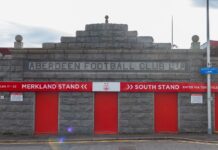
BUILDING owners and operators are unknowingly sitting on valuable assets that could unlock ‘significant’ energy, carbon, and cost savings, according to experts across the built environment sector.
A whitepaper published by Glasgow-based climate technology firm IES suggests that reinstating existing 3D design, energy compliance or BIM models created during a building’s development could be key to reaching net zero goals.
Bringing together voices from organisations including the UK Green Building Council (UKGBC), HLM Architects, the University of Glasgow, SWECO, and Perth & Kinross Council, the paper argues for putting an existing compliance energy model through further modelling stages and combining it with actual data from the building itself to create a Performance Digital Twin. This process has been coined as the Sleeping Digital Twin theory by IES.
For building owners and operators, a Performance Digital Twin is designed to enable a greater understanding of a building’s in-use performance. 64% of building owners, occupiers and managers asked in the accompanying survey to this whitepaper see the benefit of using energy models for more efficient ongoing maintenance, with 66% citing the main benefit as supporting the achievement of net zero goals.
Further savings can be made by using the model to test different retrofit and renovation options before the work is undertaken.
Advancements in technology have enabled Digital Twins to be linked to live operational data for continuous tracking and improvement of building performance. This enables facilities managers to identify where energy savings can be made and ensure improvements are delivering expected savings.
A Performance Digital Twin can support the attainment of in-use performance certifications such as NABERS and BREEAM. It can also be used to support post-occupancy evaluation studies.
The whitepaper also explores the barriers to uptake. 66% of respondents see the biggest hurdle to using energy models in operation as the associated cost. 54% of building owners and operators feel there is a lack of required skills to take on the use of models if they are handed over.
Another significant barrier to utilising existing models is gaining access to them. Only 23% of architects, engineers and contractors surveyed said they currently hand over models once a building is complete. Reasons for this include clients not asking for them in briefs, legal implications, and the belief that clients lack the skills to be able to manage the models. To address this, IES has created a guide which focuses on the current practicalities of creating a Performance Digital Twin when there is no access to existing digital assets.
Don McLean, CEO at IES, said, “Building owners spend money getting digital models developed as part of contracting a building design but when it’s complete these are often shelved and left dormant. Optimising the model to be used in the building’s operational stages means that a building owner is maximising its value to identify where improvements can be made to futureproof the building, drive down costs and meet net zero goals.
“Once a Performance Digital Twin has been created from an existing model, it can be linked up to a live dashboard through technology such as our new IES Live tool, to enable building managers to monitor, adjust and optimise the operation of a building continuously. Despite this, many building owners and operators aren’t aware that an energy model even exists for their building, let alone that it could be transformed into a Performance Digital Twin.
“As such, the first step in encouraging the uptake of this approach is educating clients on the fact that they have these models and the benefits they can bring. Then, there is a job to do to upskill building management teams to be able to use these digital assets effectively to reap the rewards. AEC professionals have a key role to play in helping to raise awareness and educate clients, as well as upskilling themselves to advance energy modelling.”
The full whitepaper, which includes viewpoints from the UKGBC, CIBSE, Introba, SWECO, Gafcon Digital, HOK, HLM Architect, Perth & Kinross Council, The University of Birmingham, and the University of Glasgow, is available to read here.








